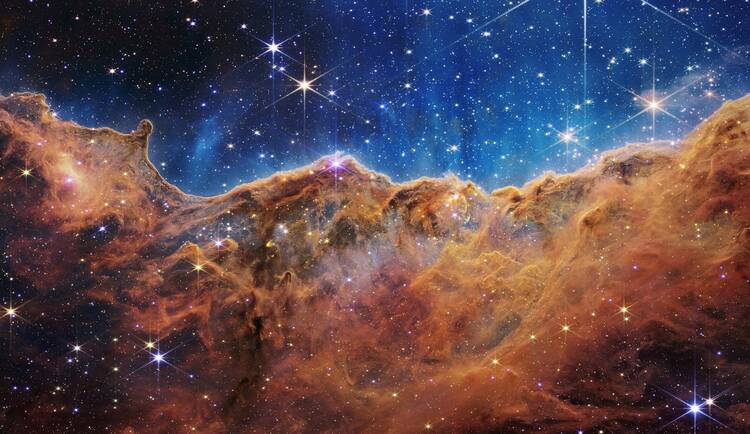VATICAN CITY (CNS) — The Jesuits at the Vatican Observatory were wowed like most people by the beauty of the photos from NASA’s James Webb Space Telescope, but the director said they also are excited by the scientific information the telescope will reveal.
“Such images are a necessary food for the human spirit—we do not live by bread alone—especially in these times,” said Jesuit Brother Guy Consolmagno, the observatory director, after NASA released a first batch of images from what the space agency describes as “the largest, most powerful space telescope ever built.”
“The images are gorgeous, as anyone can see for themselves,” Brother Consolmagno said. “It’s a tantalizing glimpse of what we’ll be able to learn about the universe with this telescope in the future.”
NASA described Webb’s mission as studying “every phase of 13.5 billion years of cosmic history—from within our solar system to the most distant observable galaxies in the early universe, and everything in between.”
“Such images are a necessary food for the human spirit—we do not live by bread alone—especially in these times.”
“The science behind this telescope is our attempt to use our God-given intelligence to understand the logic of the universe,” Brother Consolmagno said. “The universe wouldn’t work if it weren’t logical. But as these images show, the universe is not only logical, it is also beautiful.”
“This is God’s creation being revealed to us, and in it we can see both his astonishing power and his love of beauty,” the Jesuit said.
The Vatican Observatory director also noted that “astronomy is a small field,” so he knows many of the scientists who helped build the instruments on the telescope and plan its observations.
Their years of effort, he said, “is a tribute to the power of the human spirit, what we can do when we work together.”
“And at the same time,” he said, “I am amazed and grateful that God has given us humans, his creation, the ability to see and understand what he has done.”
Pointing to the telescope’s “first spectrum of water vapor in the atmosphere of an exoplanet,” a planet that orbits a star outside the solar system, Brother Consolmagno reminded readers of one of his Jesuit-scientist predecessors.
“It was about 150 years ago when Father Angelo Secchi, S.J., put a prism in front of his telescope lens on the roof of the St. Ignatius Church in Rome, and made the first spectral measurements of the atmospheres of the planets in our own solar system,” he said. “I can only imagine how delighted he would be to see the science he pioneered applied to planets unknown to him orbiting distant stars.”








